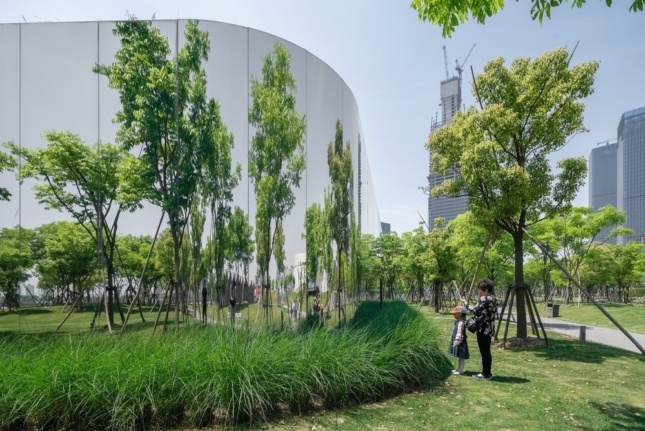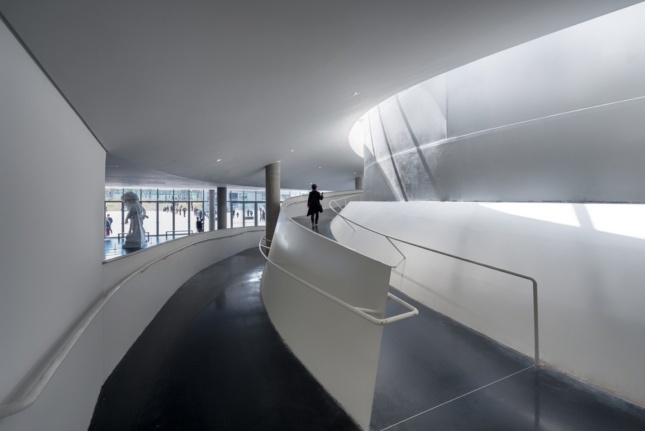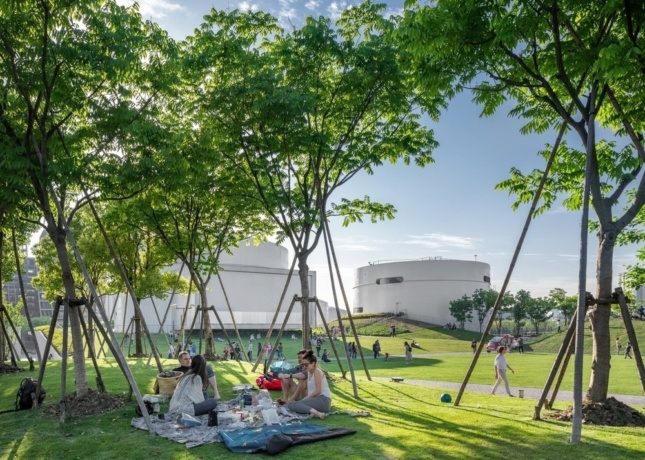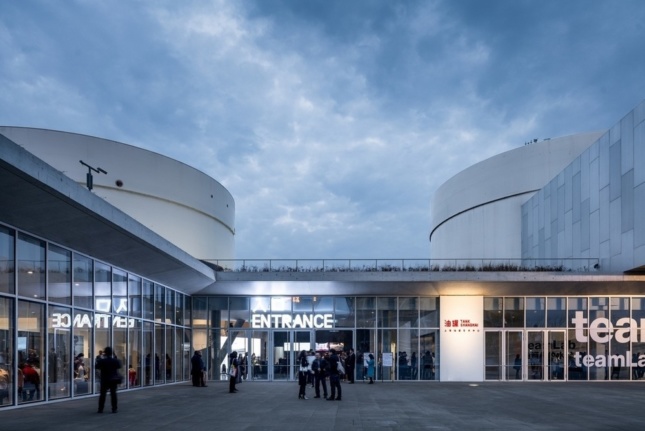Along with a vast number of cultural institutions around the globe, Tank Shanghai, a sprawling urban art environment situated along the Huangpu River in China’s most populous city, has been closed to the public and upped its virtual presence in the midst of the country’s coronavirus (COVID-19) outbreak.
Just a little over a year old, this singular adaptive reuse-centered art space centered around—and located within—a quintet of massive decommissioned fuel waste tanks is back open now, and apparently ready to show off. A newly released series of photos details the transformative project, which was designed by multi-disciplinary design studio OPEN Architecture and spearheaded by karaoke-loving contemporary art collector Qiao Zhibing.

Completed over the course of six years (with some significant delay), Tank Shanghai wholly transformed a formerly industrial plot adjacent to Shanghai’s old Longhua Airport while retaining five hulking tank structures that were left standing at the once-blighted 12-acre riverside site in the museum-stuffed West Bund area. Per OPEN, Tank Shanghai is one of the “world’s rare examples of the adaptive reuse of aviation fuel tanks.”
Described as a “sanctuary for both people and nature” that aims to “dissolve conventional ideas of site limitations and demarcations,” Tank Shanghai’s open space-meets-contemporary-art-center approach has already proven to be popular with the public. Showing now is Chicago-based installation artist Theaster Gates’ Bad Neon, which transforms one of the tank-bound gallery spaces into a roller skating rink. For most, the art is indeed a main draw but Tank Shanghai’s park setting also attracts joggers, picnickers, and the like.
“By introducing new audiences to the traditionally closed-off space of the art center, Tank Shanghai has brought unprecedented energy to the formerly industrial neighborhood and to the southwest banks of the city at large,” explained OPEN.

The five tanks are connected by a lushly landscaped “Super Surface” which serves as a natural pedestrian corridor between the different major sections of the park, including an “Urban Forest, a grassy open meadow for large gatherings, and a “stepped waterscape.” By linking the site with busy Longten Avenue, the Super Surface also opens up public access to the revitalized riverfront.
As for the tanks themselves, each has been retrofitted to serve a unique purpose and accommodate different programming. The first is home to a two-story nightclub featuring live music and bar; the second is a restaurant complete with an outdoor roof deck; the third is a cavernous, raw space left mostly unchanged in order to mount large installations; the fourth has been converted into a more traditional gallery space spread across three levels, each connected by a spiraling ramp, and the fifth has been converted to include two large, sheltered stages that each face sloping lawns for visitors to congregate for al fresco concerts, performances, and such.
“It is an art center without boundaries, and as it continues to assimilate into the life of the city more largely,” wrote New York-founded OPEN. “Tank Shanghai will continue to facilitate and inspire the creation of more inclusive and collective cultural spaces.”

















